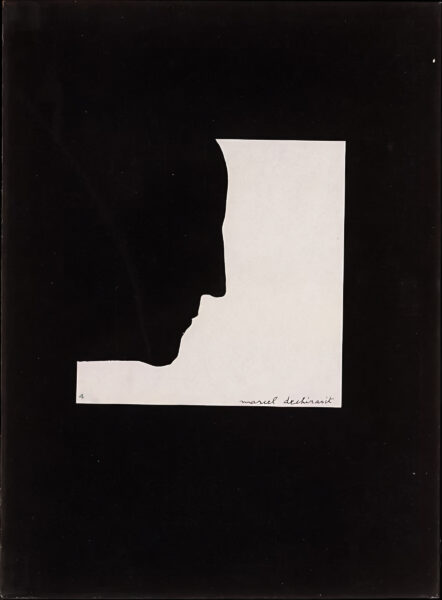
In the beginning this was Self alone, in the shape of a person (puruṣa). He looking around saw nothing but his Self (Atman). He first said, “This is I”, therefore he became I by name.
Brihadaranyaka Upanishad 1.4.1
Q: You Ask Why Am I Here? But where is Here? Who Is asking, You or I? Was I You in the Past? Or Did You become I in the Future? Does Here exist outside You and I? Is the Question Why Am I? Is the Why separate from the Am? Does the Am exist apart from the I? Is the I a constant? Is the Am superfluous? Is the Question only Why? Does the Why concern the Beginning? Or the End? Does the Question precede the Why? Or the Why beg the Question? Does the Question ask Self?
A: What is the Question?
BIBLIOGRAPHY: 1. Duchamp, Marcel. Self-Portrait in Profile. 1957. Torn and pasted paper on velvet covered paperboard. The Metropolitan Museum of Art, New York. 2. Śaṅkarācāryaḥ, Ādi. Brihadaranyaka Upanishad with the Commentary of Śaṅkarācārya. Translated by Swami Madhavananda, Calcutta: Advaita Ashrama, 1997. Print. 3. Jung, C G. Psychology and Religion: West and East. Princeton: Princeton University Press, 1989. Print. Everyone carries a Shadow, and the less it is embodied in the individual’s conscious life, the blacker and denser it is. If an inferiority is conscious, one always has a chance to correct it. Furthermore, it is constantly in contact with other interests, so that it is continually subjected to modifications. But if it is repressed and isolated from consciousness, it never gets corrected and is liable to burst forth suddenly in a moment of unawareness. At all events, it forms an unconscious snag, thwarting our most well-meant intentions.